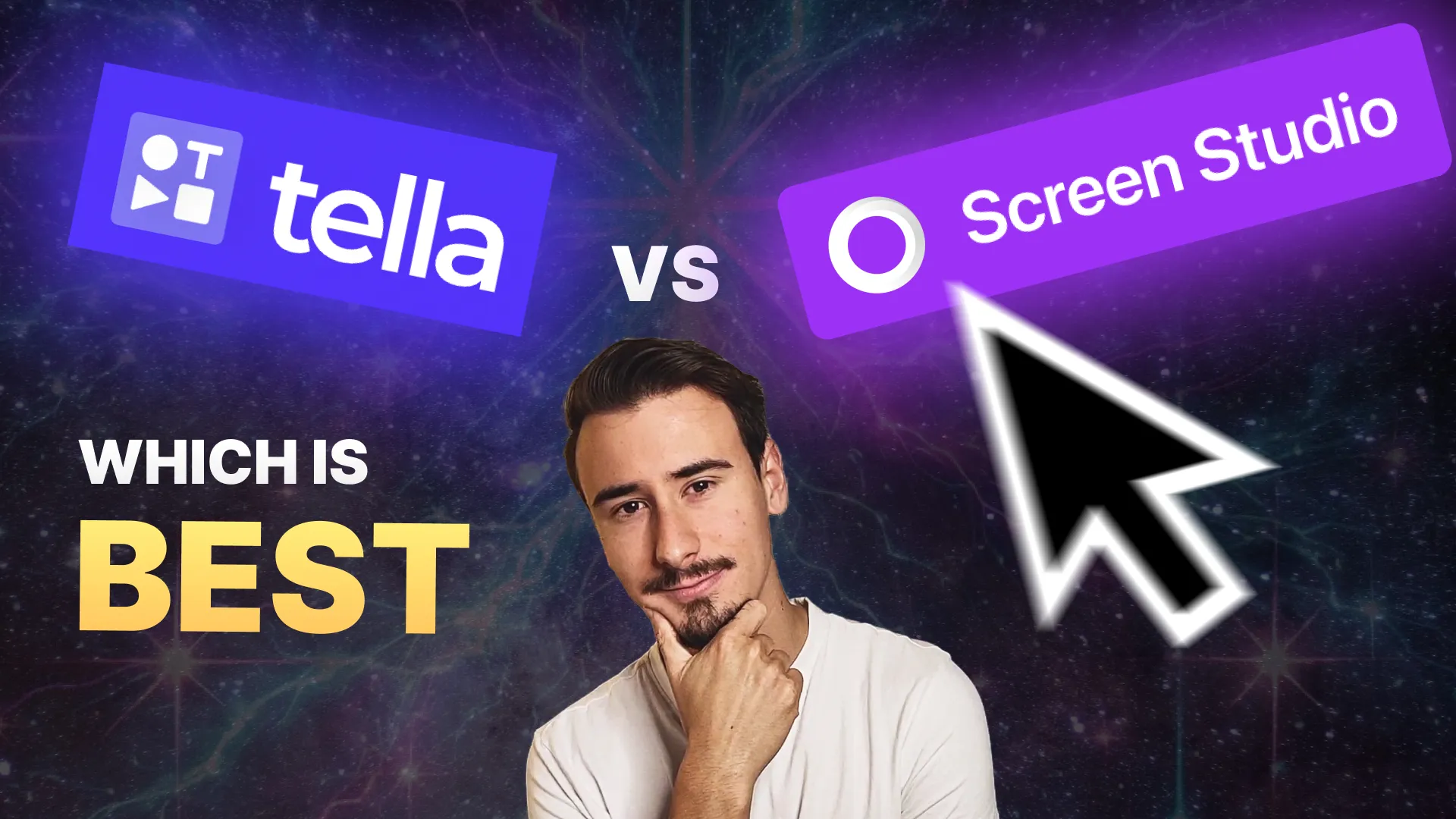
Tella vs Screen Studio: Which Screen Recorder should you use? [2025]
Choosing the right screen recording software can make a huge difference in how your videos turn out. I’ve spent hours testing both Tella and Screen Studio, and I’m here to share my experience with these tools. Whether you’re creating product demos, tutorials, or just sharing quick ideas with colleagues, this comparison will help you make the right choice.

Watch our video comparison of Tella vs Screen Studio
Do you prefer videos to articles? Then watch our video comparison of Tella vs Screen Studio to discover the best screen recorder for you.
Tella vs Screen Studio at a glance
Here’s a quick comparison of how Tella and Screen Studio compare, but keep reading for more details and my experience using them.
| Tella | Screen Studio | |
|---|---|---|
| Pricing | $15 / month | $9 / month |
| Platform support | macOS (native app). Windows (web app) | macOS only (native app) |
| Layouts | ✅ | 🟡 Limited |
| Zoom-in effect | 🟡 Limited | ✅ |
| Link sharing | ✅ | ✅ |
| Export quality | Up to 4K | Up to 4K |
| Captions | ✅ | ✅ |
| AI-editing | ✅ | ❌ |
| Combine multiple clips | ✅ | ❌ |
Both work on macOS, but only Tella on Windows
Let’s start with a fundamental factor - where you can actually use these tools. Screen Studio offers a polished native macOS application that runs smoothly on Apple computers. Tella, on the other hand, gives you more flexibility with both a native macOS app and a web-based version that works across macOS, Windows, Linux, and Chromebooks.
If you’re a Windows user, your decision might already be made - Tella is your only option between these two. The web app version of Tella trades some video quality for accessibility, making it a practical choice if you prefer not to install native software.
Both produce great looking videos
Both Tella and Screen Studio stand out from basic screen recorders by producing professional-quality recordings. Unlike simpler tools like Loom, these platforms record your screen and camera as separate tracks. This means you can adjust your video’s layout even after you’ve finished recording - a feature that gives you much more control over your final video.
Screen Studio has the best zoom-in effect
When it comes to creating polished product demos, Screen Studio has a clear advantage. Its zoom-in effects aren’t just functional - they’re cinematic. The software adds subtle motion blur and smooth cursor movements that make your recordings look like they were crafted by a professional video editor.
Think of it like the difference between a smartphone photo and one taken with a professional camera - both can capture the same scene, but one adds that extra layer of polish that makes it stand out.
Tella is better for video layouts
While Screen Studio excels at effects, Tella wins in the layout department. The app offers an extensive collection of pre-built layouts that let you position your camera recording exactly where you want it. Want your face in the corner during a presentation, then front and center for key points? Tella makes this easy.
Screen Studio has recently added layout options, but they’re more limited compared to Tella’s.
Tella is better for long-form videos
For longer videos, Tella has a significant advantage. Its clip-based recording system lets you break your content into manageable chunks. This approach not only makes recording less stressful but also reduces the risk of losing work due to technical issues.
Screen Studio requires you to record everything in one take, which you’ll need to cut manually later. This limitation can make longer recordings more challenging and risky - imagine writing a long document without saving versus creating it piece by piece.
Tella vs Screen Studio: Which screen recorder should you use?
Your choice between Tella and Screen Studio should depend on your specific needs:
Choose Tella if:
- You need cross-platform compatibility
- You create longer-form content
- Layout flexibility is important to you
- You prefer recording in smaller segments
Choose Screen Studio if:
- You work exclusively on macOS
- Creating polished product demos is your priority
- You want cinematic-looking zoom effects
- You typically create shorter recordings